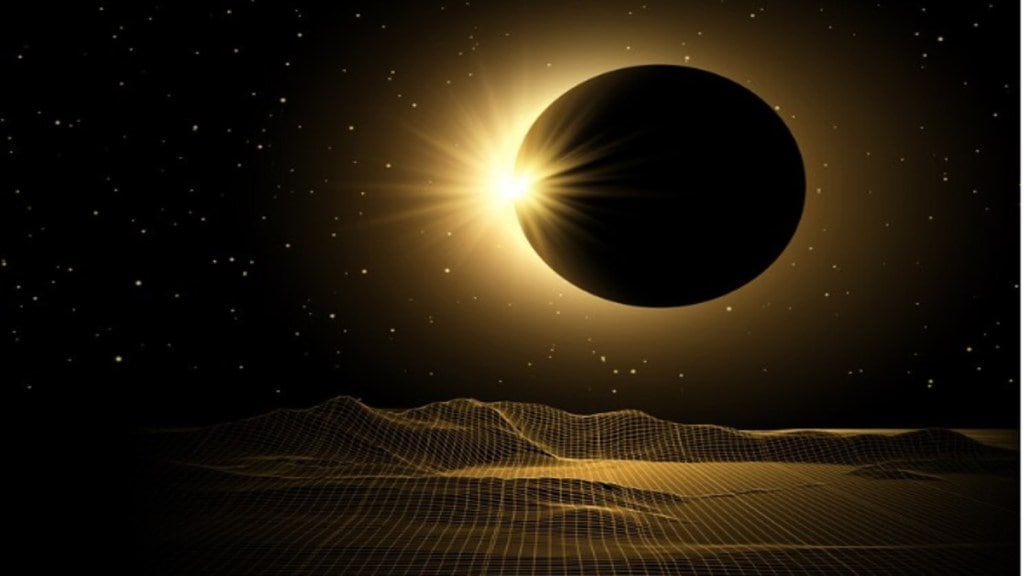Solar Eclipse 2024 Do’s and Don’ts: A solar eclipse, referred to as Surya Grahan in Hindi, occurs when the moon positions itself between the Earth and the sun, obscuring the sun’s light either partially or completely. This celestial event has captivated humanity for centuries, inspiring numerous myths and generating a wealth of advice from both cultural traditions and scientific communities. The Surya Grahan is undoubtedly one of the most breathtaking natural phenomena.
What is a Solar Eclipse?
A solar eclipse transpires when the moon orbits the Earth in such a way that it directly aligns between the Earth and the Sun. This alignment creates a shadow on the Earth, resulting in a temporary dimming of daylight. There are several types of solar eclipses—total, partial, and annular—determined by the moon’s position, the extent of coverage, and the relative distances of the Earth, moon, and sun.
When Does an Eclipse Occur?
Solar eclipses are periodic events but can be rare at any specific location. They happen when the moon’s orbit intersects with the plane of the Earth’s orbit around the sun, causing the three celestial bodies to align. Eclipses can only take place during the new moon phase when the moon is situated between the Earth and the Sun.
Solar Eclipse 2024: Date and Timing
The second solar eclipse of 2024 is set to occur on October 2, falling on a Wednesday. This eclipse will start at 9:13 PM and conclude at 3:17 AM IST (Indian Standard Time). According to traditional beliefs, the sutak (the pre-eclipse period) begins 12 hours before the eclipse starts, commencing at 9:00 AM IST on the same day. During this time, it is recommended to abstain from eating or cooking to avoid potential negative consequences associated with the eclipse.
Things to Do During an Eclipse
Although this eclipse will not be visible in India or the Asian subcontinent, here are some guidelines to consider for future occurrences. Remember to act in accordance with your own beliefs and preferences:
1. Protect Your Eyes: Looking directly at the sun, even during an eclipse, can cause lasting eye damage. If you wish to observe the event, use specially designed solar viewing glasses or handheld solar viewers to shield your eyes from harmful rays.
2. Care for Your Pets: Animals may become confused or distressed by the sudden change in light during an eclipse. Keep your pets indoors or in a safe place to prevent them from getting hurt or escaping.
3. Photograph Safely: If you plan to photograph the eclipse with a camera or smartphone, ensure you use a solar filter to protect both your eyes and your device’s lens. Avoid looking directly at the sun through any optical devices without appropriate filters.
4. Enjoy the Experience: A solar eclipse is a rare and remarkable event. If you feel comfortable, take a moment to appreciate this extraordinary spectacle of nature while following safety precautions.
What Not to Do During an Eclipse
1. Avoid Direct Sun Gazing: This is crucial! Regardless of myths and beliefs, gazing at the sun during an eclipse—even for a brief moment—can lead to severe eye damage or blindness. Always utilize proper eye protection or indirect viewing methods.
2. Do Not Use Unfiltered Devices: Observing the eclipse through cameras, smartphones, or telescopes without appropriate solar filters can damage the equipment and endanger your eyesight. Ensure you have the right tools for safe viewing.
3. Steer Clear of DIY Methods: While it may be tempting to improvise, avoid homemade filters such as smoked glass, CDs, or sunglasses, as these do not offer adequate protection from the sun’s harmful rays.
4. Stay Calm: Despite the various myths and fears surrounding solar eclipses, it’s important to remain calm. As long as you adhere to safety guidelines and stay informed, there is no cause for alarm when the moon obscures the sun.








